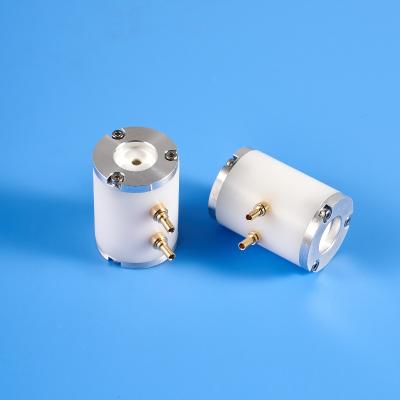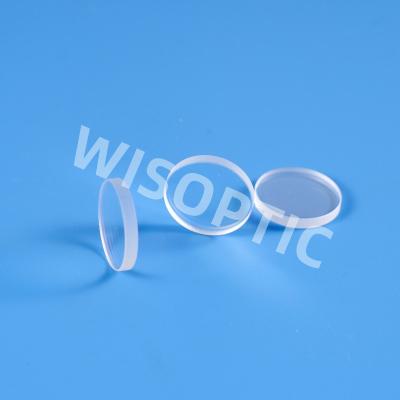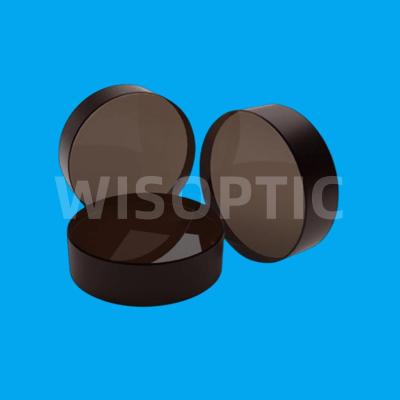Study on the efficiency and temperature robustness of chirped PPLN crystal in 1064nm frequency doubling experiment - 01
532nm solid-state lasers are widely used in industry and medicine. In the field of scientific research, continuous, high-stability 532nm green light and kilohertz, high-energy nanosecond 532nm laser are the most ideal pump source solutions for titanium sapphire oscillators and amplifiers respectively. The basic route is to use an 808nm/880nm semiconductor laser as the pump source, generate a 1064nm laser in an Nd:YVO4 or Nd:YAG crystal, and then perform frequency doubling (SHG) through a frequency doubling crystal to generate a continuous or pulsed 532nm laser. The most commonly used frequency doubling crystal now is lithium triborate (LBO, www.wisoptic.com), which has the advantages of low cost, high damage threshold, and wide light transmission band. However, its nonlinear coefficient is not high, and the conversion efficiency of frequency doubling is very low. Moreover, the frequency doubling efficiency of LBO is very sensitive to temperature. Slight changes in temperature will affect the phase matching of the incident light and thus affect the parameters of the laser output.
After the concept of quasi-phase matching and the electric field polarization method were proposed, people began to try to use periodic polarized lithium niobate (PPLN, www.wisoptic.com) crystals instead of LBO as frequency doubling material for testing. In 1997, G.D. Miller of Stanford University tried to use PPMgLN with a length of 53mm as an extra-cavity frequency doubling crystal. When the temperature was strictly controlled at 199.5°C, 2.7W continuous green light output could be obtained, and the conversion efficiency reached 42%. However, when the temperature deviation was 0.3°C, the conversion efficiency almost dropped to 0. In 2009, Japan's Kiyohide Sakai and others also used 18mm PPMgLN to obtain a green light output of 1.2W, with a conversion efficiency of 60%. However, the conversion efficiency was already reduced more than half when the temperature deviated by 1°C. In 2002, Yu Jian and others from Tianjin University in China also successfully used a self-made PPLN to achieve extra-cavity frequency doubling output. However, they did not use temperature control equipment, and the frequency doubling conversion efficiency was only 0.052%. Although PPLN can obtain stronger frequency-doubled light energy compared with LBO, it still requires strict temperature control when used in frequency-doubling. In order to break through this limitations of PPLN, various structural design solutions have been proposed, including multi-periodic, chirped, aperiodic polarized crystals, etc. Among them, the chirped periodic polarized lithium niobate (CPPLN) crystal refers to the introduction of a chirp-like structural distribution in the laser propagation direction based on PPLN, that is, the polarization period changes linearly along the propagation direction. This design allows the crystal to provide a continuous reciprocal vector band at the expense of a certain nonlinear coefficient, broadens the gain bandwidth of the crystal, and allows the crystal to be used in a wider range of experimental scenarios.
In order to further improve the production efficiency and stability of 532nm, this paper designed the structure of a chirped periodic poled LN crystal (www.wisoptic.com) based on quasi-phase matching. This study aims to obtain higher conversion efficiency of the frequency doubling in CPPLN crystal than in LBO crystal which is currently commonly used in the market, and to prove that the CPPLN crystal has a certain allowable variation range in ambient temperature resulting in higher conversion efficiency and lower experimental operation difficulty. Experiments show that the designed CPPLN can output 148mW of 532nm light when the input continuous 1064nm beam power is 22.53W, and the conversion efficiency is about 0.66%, which is 15.58 times that of LBO. At the same time, the half-maximum width of CPPLN that changes with temperature is greater than that of LBO, and the spot shape basically does not change with temperature, so it has better temperature robustness than LBO.



